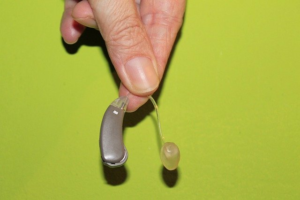The Complete Hearing Aid Buyer’s Guide for 2022 – Everyday Health
This is a big question in many people’s minds: How do you sort through the many features, costs, and styles to choose the right hearing aid? Here’s an overview of the (many) hearing aid features available and what to look for before you make a decision.
Features to Look For in a Hearing Aid
Feedback Cancellation
Most hearing aids, even budget-friendly brands like Audicus and MDHearing, come with feedback cancellation. This feature cancels out interference coming from other de…….
This is a big question in many people’s minds: How do you sort through the many features, costs, and styles to choose the right hearing aid? Here’s an overview of the (many) hearing aid features available and what to look for before you make a decision.
Features to Look For in a Hearing Aid
Feedback Cancellation
Most hearing aids, even budget-friendly brands like Audicus and MDHearing, come with feedback cancellation. This feature cancels out interference coming from other devices that are held close to your hearing aid, such as a phone, which might cause a whistling sound otherwise.
Digital Noise Reduction
Along with feedback cancellation, digital noise reduction is now a standard feature as well. That’s good news, according to our March 2022 hearing aids customer survey, which found that digital noise reduction is the most important feature people want in a hearing aid. Digital noise reduction may allow you to hear and understand conversations better by cutting down on background noise.
Directional Microphones
While directional microphones aren’t a given with every brand of hearing aid, they are included with the majority of models. Directional microphones pick up and amplify sounds coming from certain directions, most often from the front, although some microphones, such as those in the Phonak Paradise line of hearing aids, include motion sensors that adjust the microphone direction when they sense you’re moving and having a conversation.
Directional microphones and digital noise reduction work together to allow you to focus on important sounds without being distracted by background noise.
Telecoil
While not all hearing aids include a telecoil, also called T-coil, according to the Arizona State University Speech and Hearing Clinic, many RIC and BTE models and especially the smallest CIC models do. T-coil allows you to connect to hearing assistive technology, called a hearing loop, in certain public facilities.
This direct connection between your hearing aid and the hearing loop will enable you to hear sounds without the interference sometimes caused by the acoustics present in large settings. Places of worship, theaters, and museums are often equipped with feedback loops.
Additional Hearing Aid Features
Bluetooth Connectivity
While they aren’t necessary, Bluetooth hearing aids offer a great deal of convenience because they basically function as a set of earbuds when connected to your phone, tablet, or other device.
Keep in mind that some hearing aids offer Bluetooth connectivity but not Bluetooth streaming. An example is the Eargo hearing aids, all of which include Bluetooth connectivity for making adjustments with a smartphone app but are too small to house the parts needed for Bluetooth streaming.
If you want to stream music, movies, or phone …….
Source: https://www.everydayhealth.com/healthy-living/hearing-aid-buyers-guide/







